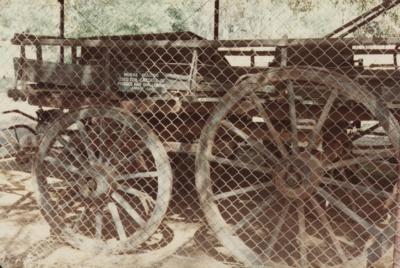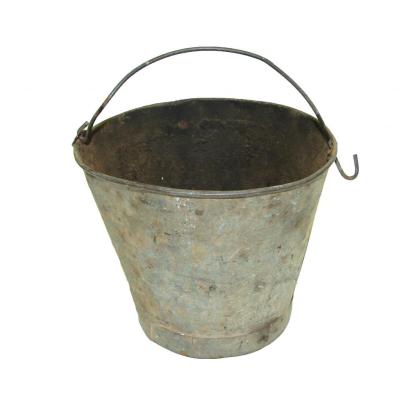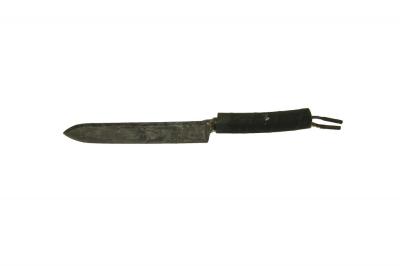WAGON; HORSE DRAWN
1880Horse wagon used for cartage of produce and possibly occasionally sandalwood, approx 1880.
Nave (hub), spokes and felloe (rim) made from York Gum which signifies it was locally made in the Avon Valley.
Carrying capacity of wagon approximately five Imperial tons.
Bag lifter attached to back of wagon indicates the primary use of wagon in later years was to carry produce.
Lkely to have been locally made; this supports the various provenances recorded for this artefact which are all local:
1. The sandalwood wagon was locally made by the town carpenter, John ONeill, and the town blacksmith W. Robinson. Small farmers would take their sandalwood wagons up to a 100 miles or so inland to gather the wood. (not the current favoured provenance)
2. Came from the McCluney estate and was made by John Robinson Smith & John ONeill, carpenter 1860s?
John McCluney (Jnr) remembers the wagon always stationary in the open yard and very rarely used. John was the grandfather/father (?) of Lucy McCluney and passed the object onto to her. Associated place: Pinecroft Homestead.
3. Made by W Syred, from the McLuney Estate.
It is believed the wagon may have been part of the original collection when the museum opened in 1962. (Shire of Toodyay photograph 2001.1394, dated circa 1962, appears to show the wagon in the background in the machinery display shed of the newly opened Newcastle Gaol Museum.
Details
Details
On the bag lifter is a brass plaque: 'Perkins Patent No 7918'
J McCluney/Toodyay is faintly painted on right side of tray.
Carrying capacity of wagon can be calculated from the width of the wheel/tyre at 1 ton per inch. This wagon would probably have been able to carry 5 tons.
In spite of the accompanying sign it is unlikely this wagon carted sandalwood very much as the side rails are all intact. Sandalwood was pulled up by the roots and it was very twisty and gnarly. Sandalwood wagons commonly had 3 uprights on each side of a flat tray to allow the bits of wood to poke out but stop them falling off completely. The horizontal top rail on the tray of this wagon would have impeded the loading of the wood.
bag lifter
'In earlier days bags of wheat were thrown onto high wagons by hand but by the 1930s a bag loader had been invented and a horse did the work. A full bag was put on the loader at ground level, one end of a chain was attached to the loader and the other to a horse and as the horse was led out a few yards the bag flipped up onto the wagon. Bags of wheat held three bushels, weighed 180 pounds and there were 12 bags to the ton.' from Wally Chitty’s book Toodyay, the Gold Old Days p 88.











